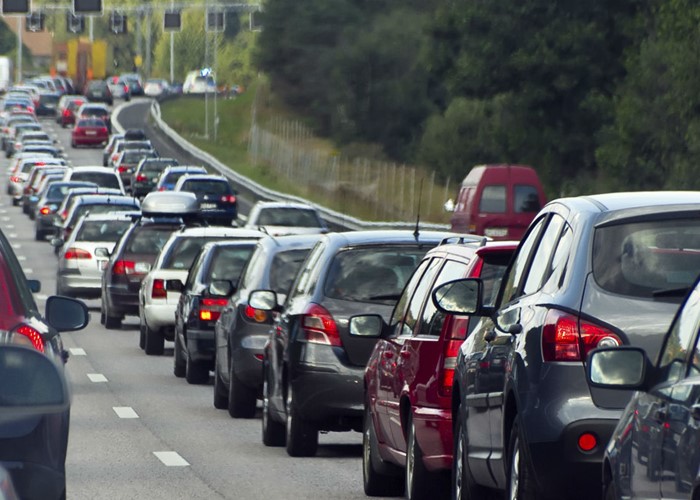The north/south divide in petrol prices

When it comes to the price of fuel, you're actually better off if you live up North!
Let’s face it, there’s always been a bit of friendly rivalry between the north and south of England, with each region believing it’s better than the other. But now it seems that the divide has been taken one step further – in the form of petrol prices.
In fact, according to research from the AA, if you live in the north you’re far likely to get a better deal on your fuel than if you live in the south. The report claims that large areas of southern England have suffered from an unprecedented disparity in petrol prices between neighbouring towns over the past month.
Frustratingly for southerners, although the average price of petrol in the UK has fallen from the all-time high of 121.61p a litre in mid-May to the current 118.08p, in large areas of the south, south east, home counties, and rural Midlands, the cheapest supermarket price is 119.9p a litre - which is still above the UK's 2008 peak of 119.7p.
Beat your neighbours
Back in May, a petrol price war meant that petrol prices dropped to 113.9p a litre in towns with Asda fuel stations, and 115.9p in others. However, many built-up areas missed out. As a result, simply living in the wrong town could mean you’re paying 4p to 6p a litre (or £2 to £3 a tank) more for petrol compared to the town next to you.
Londoners hit the hardest
So which areas are getting the best deals, and which are getting the worst?
Well, according to the AA, it’s Londoners that are the worst off, paying an average of 119.3p for their petrol. (Big surprise, eh?)
Meanwhile, the cheapest average petrol price is in Yorkshire & Humberside at 116.8p.
To give you a better idea, the table below highlights June’s average regional petrol prices, compared to May.
|
Region |
Average June price (per litre) |
Average May price (per litre) |
|
Northern Ireland |
118.8p |
122.1p |
|
Scotland |
117.8p |
121.5p |
|
Wales |
118.4p |
121.6p |
|
North |
117.1p |
121p |
|
North West |
116.9p |
121p |
|
Yorkshire & Humberside |
116.8p |
120.7p |
|
West Midlands |
117.7p |
121.7p |
|
East Midlands |
117.6p |
121.4p |
|
East Anglia |
118.6p |
121.7p |
|
South East |
119p |
122.1p |
|
South West |
118.3p |
121.6p |
|
London |
119.3p |
121.8p |
|
UK AVERAGE |
118.08p |
121.54p |
So it’s pretty clear that if you live in the northern half of the country, you’re likely to get a better deal on your fuel than if you live in the southern half.
The table below shows you the same for diesel prices.
|
Region |
Average June price (per litre) |
Average May price (per litre) |
|
Northern Ireland |
121.3p |
123.7p |
|
Scotland |
120.9p |
123.1p |
|
Wales |
121p |
123.3p |
|
North |
120.1p |
122.8p |
|
North West |
119.6p |
122.3p |
|
Yorkshire & Humberside |
119.5p |
122.2p |
|
West Midlands |
120.2p |
123p |
|
East Midlands |
120.3p |
122.8p |
|
East Anglia |
120.8p |
123.2p |
|
South East |
121p |
123.3p |
|
South West |
120.7p |
123p |
|
London |
121p |
123p |
|
UK AVERAGE |
120.52p |
122.94p |
This time it’s Northern Ireland that has the highest petrol price at 121.3p, closely followed by Wales, the south east and London at 121p. Again, Yorkshire & Humberside has the lowest price at 119.5p.
Keeping the costs down
If you live in one of the more expensive petrol areas, you might be pondering whether it’s time to move. But if that seems a little drastic, don’t despair because there are plenty of other ways to keep your petrol costs to a minimum. Take a look at these five tips:
Shop around
The first thing to do is to shop around. A great website to use is petrolprices.com as this will help you locate the lowest-priced fuel in your area. Simply register your details and enter your postcode. The site will then locate the lowest prices for petrol, diesel and even LPG fuel near to where you live.
If you’re still not convinced that prices can really vary that much from petrol station to petrol station, the chart below will give you some idea of just how much prices can differ:
|
BRAND |
This month (pence per litre) |
Last month (ppl) |
|
Asda |
114.32 |
117.90 |
|
BP |
119.06 |
122.58 |
|
Esso |
117.86 |
121.17 |
|
Jet |
116.83 |
120.63 |
|
Morrisons |
115.32 |
119.47 |
|
Murco |
118.53 |
121.84 |
|
Sainsbury |
116.31 |
120.37 |
|
Shell |
117.36 |
120.76 |
|
Tesco |
117.45 |
120.66 |
|
Texaco |
119.01 |
122.22 |
|
Total |
118.01 |
121.62 |
|
UK average |
118.08 |
121.54 |
So you can see that it really can pay off to shop around!
Adjust your driving technique
Switching to a more fuel-efficient driving style is easy to do. To start with, make sure you watch your speed. Every extra 10 miles of speed per hour costs you an extra 4p per mile. So the faster you go, the more this will increase.
You should also ensure you drive in the correct gear, as driving in a lower gear than you need to wastes fuel. Try to avoid sudden braking and accelerating too as this can add up to 30% to your fuel bill.
Unfortunately if you’re travelling on a hot day, blasting your air conditioning can add 10% to your fuel bill, while opening the windows also burns more fuel as the wind creates resistance. So try to keep air conditioning usage to a minimum and keep your windows closed if you can.
Related how-to guide

Beat the petrol price hikes
Fuel-saving tips and cheaper car running advice to help you save money on your motoring, and beat the petrol price hikes.
See the guide
Ditch the extra weight
Related how-to guide

Beat the petrol price hikes
Fuel-saving tips and cheaper car running advice to help you save money on your motoring, and beat the petrol price hikes.
See the guideA 100kg load can reduce mileage by up to five miles per gallon – so if you’re not using them, remove all roof racks and empty the boot of all unnecessary items.
Carry out some basic maintenance
Make sure you regularly check your tyre pressure, oil level and coolant. If you keep your car well-maintained it will be far more fuel efficient! Believe it or not, under-inflated tyres can add up to 3% to your fuel bill.
Get cashback
Finally, when paying for your petrol, it’s worth keeping an eye out for loyalty schemes operated by the big petrol firms and motoring organisations. Often they will offer their own-branded credit cards and by using them, you can collect reward points.
For example, the AA Credit Card Visa offers you a point for each pound you spend on motoring expenses. If you're a member of the AA, that is then doubled, and you can cash in those points on everything from car insurance and maps to high street vouchers and cash.
Alternatively, you could use a cashback credit card such as the American Express Platinum Cashback Card which offers 5% cashback in the first three months up to £100, and up to 1.25% thereafter. Just bear in mind that American Express isn’t accepted everywhere.
So no matter where you live, follow these five steps and you’ll easily be able to keep your petrol costs down!
Rachel Robson takes a look at which car brands come out best in terms of value for money.
More: Petrol price hikes trigger supermarket price war | Buy a new car online
Most Recent
Comments
-
The article is very Anglocentric. I live in the south (Edinburgh) and I notice that petrol prices are lower than those in the north (Highlands and Sutherland). Why do you classify Scotland as if it were a single region of England?
REPORT This comment has been reported. -
MCAS32 Would it really be economic for you to travel the extra 15 miles,2 or 3 times a week to save 5p per litre? also I used to travel to the football with a friend who ran his own driving school & he would have been over the moon to pay £283 for annual car insurance--who's your broker??
REPORT This comment has been reported. -
What do Londoners expect? Do they have any refineries in London? No! Scotland has to PAY £28 per kilowattt for power that they PUT ON to the National Grid because of its distance from London! How would you like them apples?
REPORT This comment has been reported.
Do you want to comment on this article? You need to be signed in for this feature









30 June 2010